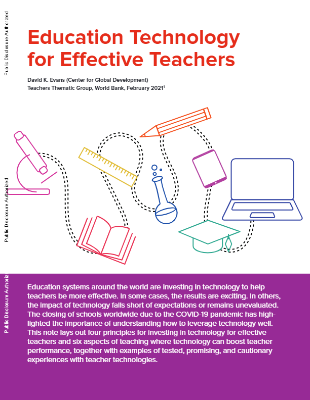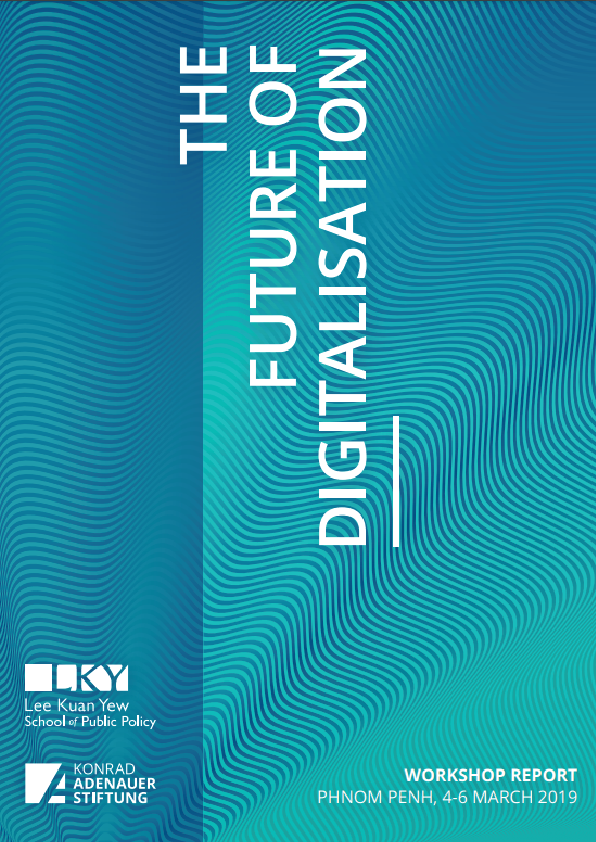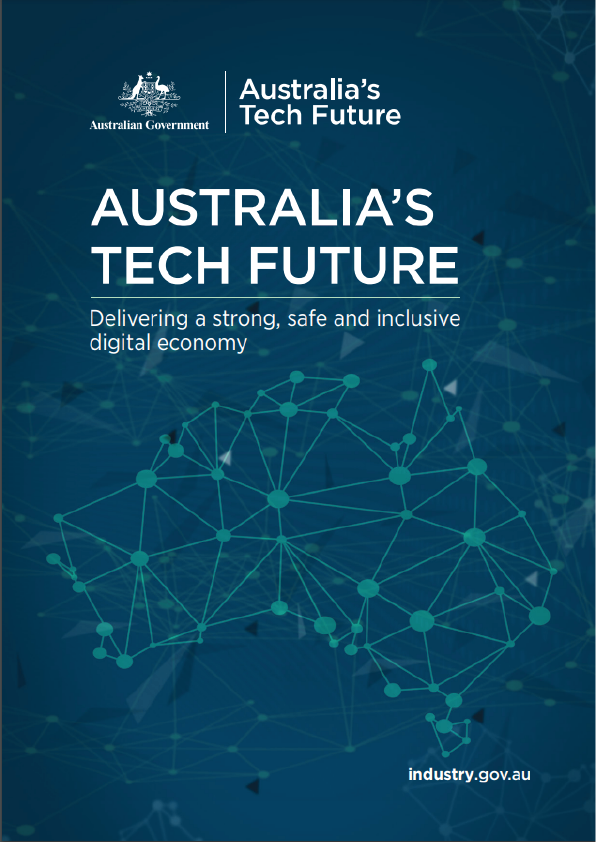Education systems around the world are investing in technology to help teachers be more effective. In some cases, the results are exciting. In others, the impact of technology falls short of expectations or remains unevaluated. The closing of schools worldwide due to the COVID-19 pandemic has highlighted the importance of understanding how to leverage technology well. This note lays out four principles for investing in technology for effective teachers and six aspects of teaching where technology can boost teacher performance, together with examples of tested, promising, and cautionary experiences with teacher technologies.
The Principles
Principle 1: Technology is not the solution to the learning crisis. But technology can be the solution to specific micro-problems within the education system. When considering technology investments, the key is to begin with a specific problem and ask, What’s the best way to solve this problem? And then to ask, can technology help in this case? Approached problem-by-problem, education systems can have realistic expectations of the promise of technology and ensure that they help teachers to help their students.
Principle 2: If you’re going to invest in technology, invest in the training, support, monitoring, and maintenance to make it work. Technology investments often come with a significant up-front investment. But it doesn’t make sense to invest in the hardware or the software without budgeting for all the supplemental services required to make the technology work. Systems often underestimate the degree of sensitization and training required for teachers—along with others in the education system, like principals and ministry staff—to buy into a new technology and then to use it effectively.
Principle 3: Test the technology.
- Make sure it works. In an effort to use smart phones to monitor teachers in Haiti, the technology ultimately failed. Government officials and partners alike have entered classrooms to see technology that may have worked once but was not in a place to be maintained. If the technology is beyond the infrastructure capacity of the weakest schools in the system, it won’t deliver results.
- Make sure it is used. An intervention that provided computers to classrooms in Colombia managed to get the computers there, but teachers largely ignored them because the technology was not integrated with the curriculum.4 If teachers do not see the value of a technology, do not know how to use it, or are not comfortable using it, it won’t deliver results. The goal is not to maximize the amount of time the technology is used, but rather to ensure that it is used at the right times.
- Make sure it increases learning. Even if the technology works and teachers use it, there is no guarantee that it will increase learning. In Kenya, a program provided tablets to teachers. The tablets had teacher guides, audio and visual aids, and assessments. Although many teachers used the tablets, the impact on student learning was no greater than for teachers who received printed teacher guides, despite a much higher price tag.
Principle 4: Technology to monitor and manage teachers will only work with political buy-in. Monitoring technology cannot outdo collusion by teachers, school principals, and education officials. Teacher allocation systems only work if teachers participate in them. Many technocratically informed technology programs have failed even to get off the ground because of political opposition. Governments need consultation and communication strategies that ensure that all participants – from administrators to teachers – see value in new interventions.
Technology, when wisely deployed, can provide benefits to teachers and to their students, but success is unlikely if teachers aren’t partners in the process.











